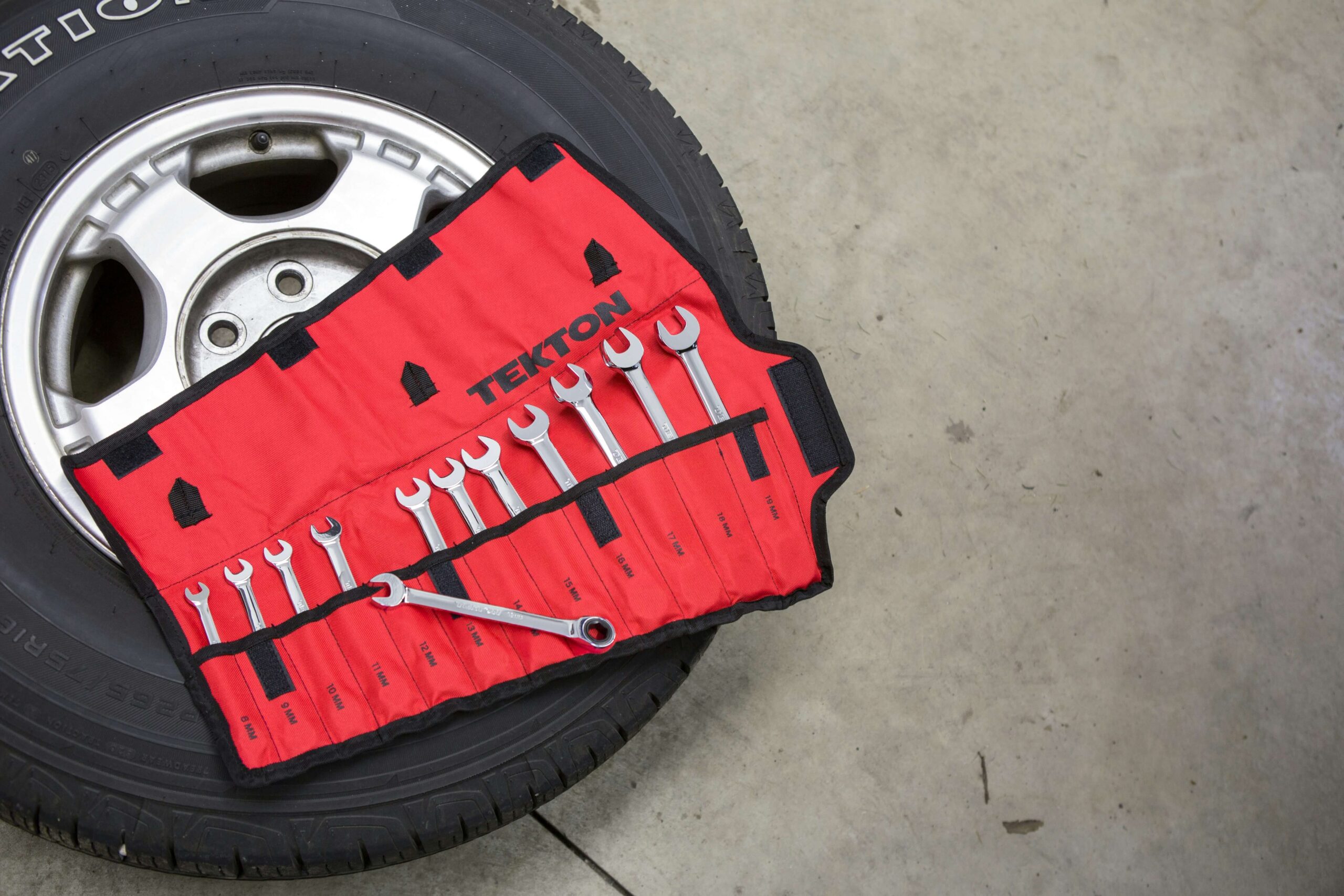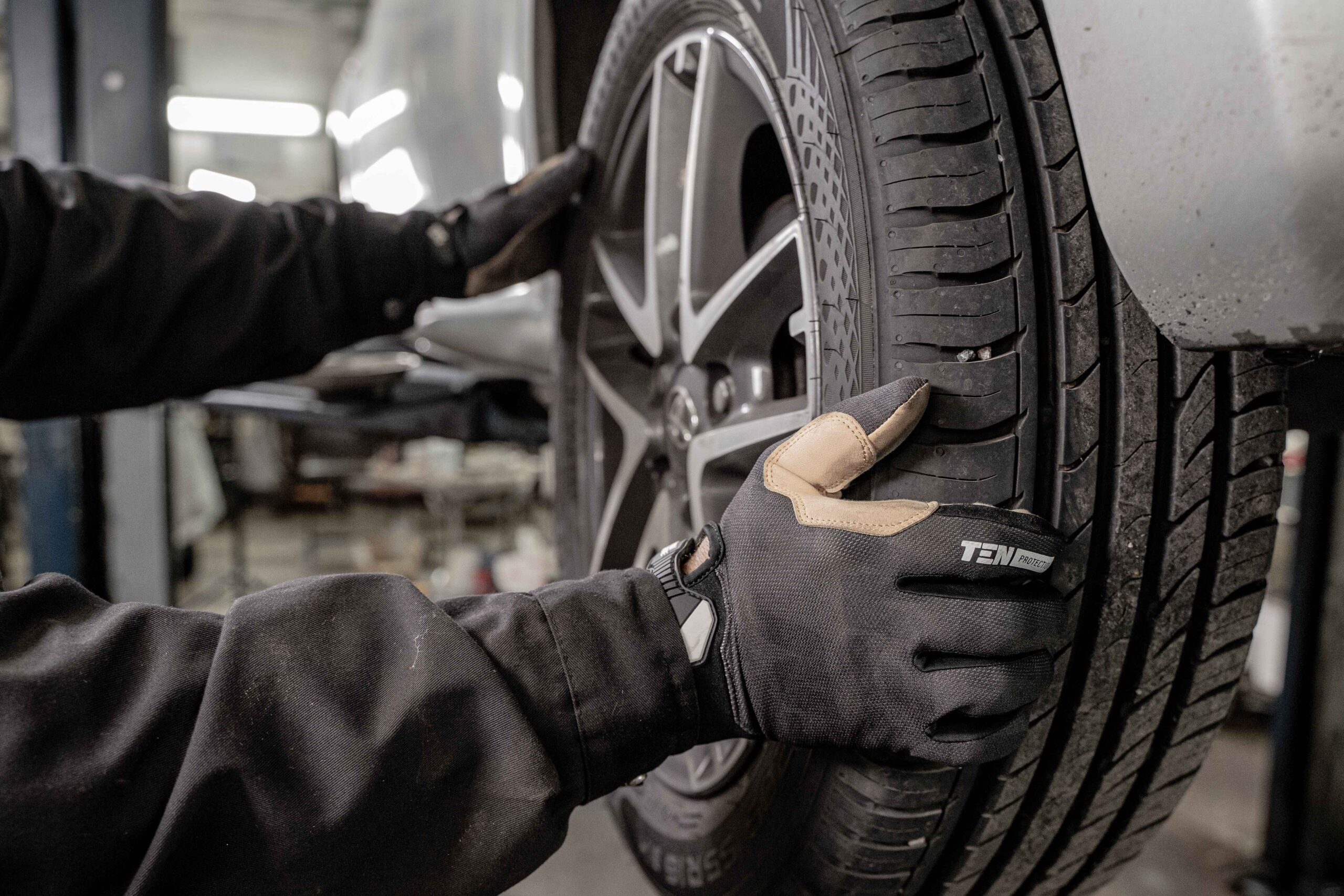Not knowing How to Change a Tire Yourself can make situations more difficult than they actually are. Let’s say you are on a road-trip to an unexplored location without much facilities and you get a flat tire, what will be you do if you don’t know how to change a tire? Here we are teaching the easiest way on how to change a tire Yourself.
How to Change a Tire Yourself?
While replacing a flat with a spare tire may seem daunting if you’ve never done it before, believe us when we say it’s not that complicated. You simply have to follow our instructions.
Stop the Car Safely and Put your Hazards on
Find a area with no traffic and turn on your emergency hazard lights. Never park your car on an incline to keep it from rolling away, and stay off of soft soil or grass. If you have to drive slowly for a block or two to get to a safe, flat area, then so be it.
Apply the parking brake once you’re parked to ensure the vehicle doesn’t move. For added safety, place heavy rocks or blocks around each tire you aren’t changing to keep the vehicle from rolling.
How to Change a Tire Yourself: Remove Spare Tire and Jack
The spare tire will be in the trunk. Retrieve the wheel from the trunk. Also, remove the jack and the tire iron you need to remove the lug nuts. On most vehicles, the tire iron is part of the jack. You’ll use it to turn the bolt on the end of the jack to raise or lower it, and also to remove the lug nuts on the tire.
Also If you don’t have a spare, your vehicle may have a sealant kit to temporarily patch your flat tire. If you don’t have that either, call a tow truck.
Use a Jack to Elevate Your Vehicle
Provided you have the tools necessary, find a solid point on the frame of your vehicle to elevate the portion of the car near the wheel you need to replace. Remember to place the jack in a position that won’t be hit by yourself or others, risking the vehicle being dropped from the jack. Elevate the vehicle until the tire is no longer touching the ground (recommended 1-2 inches)
- Place the jack on a part of the frame that will not damage or warp components of your vehicle, causing more damage.
- Begin to lift the vehicle by pressing down on the floor jack or by turning the floor jack handle slowly. You will begin to see the tires lift from the ground. To have enough room to dismount the tire, you want to make sure that the tire is at least lifted 3-6 inches from off the ground.
- Grab your jack stands. These are used as a safety precaution so that the vehicle doesn’t fall to the ground in case your floor jacks break or slip. The owner’s manual will show you where to place them. To engage the jack stands, use the lever that is attached to them and line it up with the jack stand point (Usually indicated by an arrow engraved into the car) but only raise the stand to about an inch or two away from the jack stand point which is usually the frame of the car. CAREFULLY release the pressure from your floor jack so that the vehicle falls into place with the jack stands.
Loosen the Nuts
Remove the hubcap and loosen the nuts part-way. Start with the lowest bolt and avoid causing damage to the undamaged bolts/lug nuts. Pry the hubcap off using the flat end of your tire iron or a flathead screwdriver. Do not remove the lug nuts entirely. Just use the end of the tire iron to loosen the nuts by turning them counterclockwise so that there’s no longer any resistance. You should be able to spin the nuts by hand, but they shouldn’t be so loose that they spin freely.

Slide the Jack Under the Frame
Place the divot in the jack directly under the metal rim of the frame. Get on the ground and use the flashlight on your phone to take a closer look. Touch the area directly behind the metal body of your exterior to feel and look for a thin, metal length. This is your frame. Set the jack underneath the frame right next to the tire you’re replacing.
- Many cars have molded plastic along the bottom. If you don’t place the jack in the right spot, it will crack the plastic when you start lifting. If you’re not sure about the right place to put the jack, read your owner’s manual.
- There may be a small notch or mark just behind the front wheel wells, or in front of the rear wheel wells where the jack is intended to be placed.
Raise the Vehicle off the Ground
Use the jack to raise your tire 4–6 inches (10–15 cm) off of the ground. Turn the handle of the jack clockwise to begin raising the platform up. Once the platform on the jack makes contact with the vehicle, take a look at the point where the jack meets the frame to confirm it’s on your frame. If it isn’t, loosen the jack and reposition it. If it is, continue to lift your vehicle off the ground.
- The vast majority of jacks are scissor jacks. You use the tire iron or a rod to twist the nut on the side and hoist the vehicle. You might have a pump-assisted jack, though. With a pump jack, you repeatedly move the handle up and down to raise the vehicle hydraulically.
- This can be kind of freaky the first time you do it. You might think your jack is going to snap or your car is going to tilt over. Don’t worry! Your jack and vehicle are designed to handle this.
- It can take a few minutes and a lot of elbow grease to get that vehicle up, so feel free to take breaks if you need to.
- It’s worth double-checking to make sure the jack is on the frame. You really don’t want to damage your vehicle with the jack.
- Make sure the vehicle is secure in the air by pressing down on the side of the vehicle that is jacked up in the air. Next, you need to add some wheel chalks to the opposite side wheels of the vehicle. If you have the car jacked from the front left side of the vehicle, then you would want to place two wheel-chocks under the rear tires to prevent the vehicle from rolling.
Pop the Nuts off and Pull the Tire Off
You already loosened the nuts, so removing them should be fairly easy. Use the tire iron and brace the tire with your non-dominant hand if you need to. With all of the lug nuts removed, slide your busted wheel off of the axle and set it aside.
- Flip your hubcap upside down to turn it into a small bowl and set your lug nuts inside so that you don’t lose them.
- Use the proper body mechanics when dismounting a tire. Mounting and dismounting a tire is very tiresome and heavy on your back so you always want to make sure you squat using your legs with your back straight. Never place your legs under the vehicle while it’s lifted up because that’s a safety hazard. If you can, grab a small mechanics chair as this will help secure your back.

Place the Spare one on Your Car
Line the lug nut bolts up with the openings on the spare and slide the spare on to the axle – holding the tires at the positions of 4 and 8, lifting the tire slightly and pulling the tire out. The valve stem is the little rubber pipe that sticks out where you add air to the tire. If it’s pointed inward towards the body of the vehicle, the tire is backwards.
- Fun fact, the spare tire is also known as a “donut.”
- Take one of the bolts you removed from the old tire, take your spare tire, and align the sockets on the tire rim with the sockets on the tire mount, then place the tire on the mount. Insert the bolt into the topmost socket and rotate the bolt into its socket enough to ensure the tire will not fall off the mount, but not too tightly as to fully insert the bolt into the socket.
- Grab the tire using proper body mechanics (this is important for your physical health) by getting down on one knee and rolling the tire onto your foot. Carefully lift with your arms and foot to align the tire with the hub.
- Align the tire with the wheel hub. Press the tire and wheel against the hub so that it sits completely flushed and symmetrical with the hub bearing (this is important for tightening reasons). Keep your foot pressed onto the tire to secure it.
- Begin screwing the lug nuts back on. First, you want to make sure that you’re hub cap is securely placed back on. Start with one lug nut and thread it all the way down on the wheel stud to help hold the tire on the hub.
Replace the nuts by Hand
Gently slide each over the bolt and tighten it by hand to partially lock them in place. You will tighten the lug nuts again once the car is down and there is no risk of it falling.
Note: use the same lug nuts that were previously on your wheel. You don’t need special lug nuts for the spare.
Lower Your Vehicle and Remove the Jack
Turn the handle or bolt on the jack counterclockwise to begin lowering the vehicle. Continue lowering the vehicle until the tire is comfortably back on the ground. Then, carefully remove the jack from underneath and set it back in your trunk.
- Keep your entire body out from underneath the vehicle. If the jack slips your vehicle gets closer to the ground, you don’t want your body underneath it.
Do this to make sure you are able to remove the jack stands.
- Remove the jack stands from under the vehicle.
- Remove the old tire and wheel assembly.
- Release the pressure from the floor jack by slowly turning the lever to the left and you will start to see the vehicle slowly fall to the ground. Once the vehicle is fully on the ground. Remove the floor jack.
- Remove wheel chocks.
You can watch demo on YouTube on How to Change a Tire Yourself.
Conclusion on How to Change a Tire Yourself
If your spare is a full-size tire (rather than a donut), you can drive the same way you normally would. Check your tire pressure and fill your spare with air as needed. This is especially important if the spare has been in your trunk for a while, since it may have leaked a little in storage.
- Head to an auto shop as soon as you can. Small punctures can usually be repaired for $15-100. If the tire is not repairable, you may need to buy a replacement tire.
Also Read: What is the Importance of Car Insurance?
